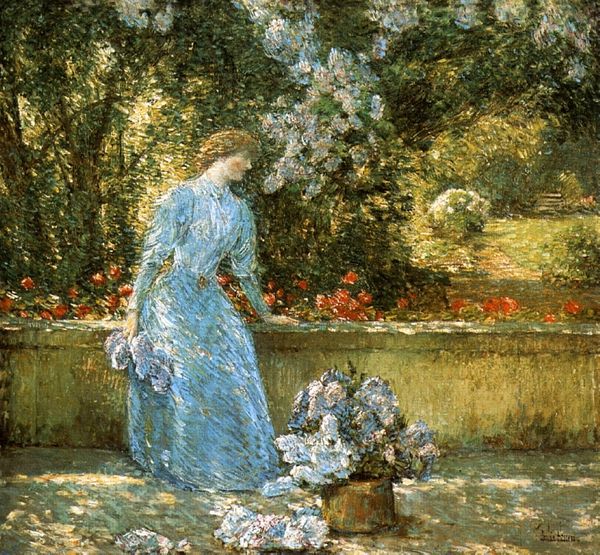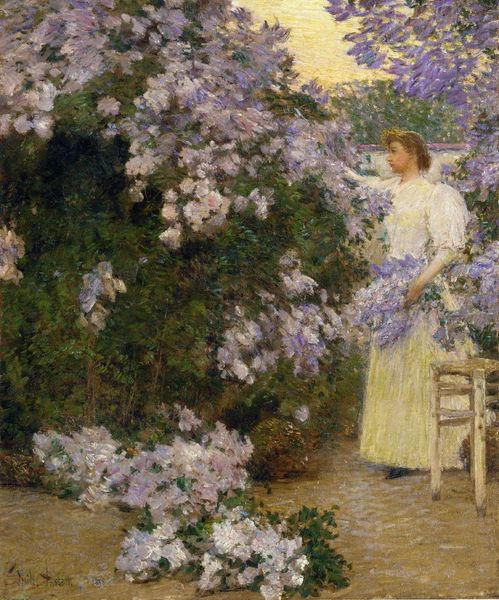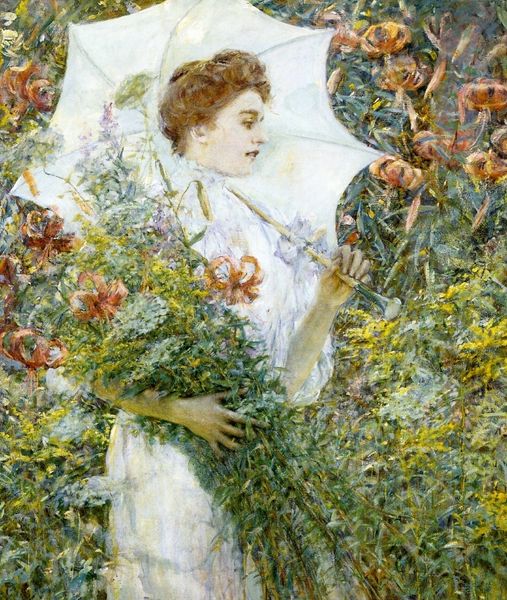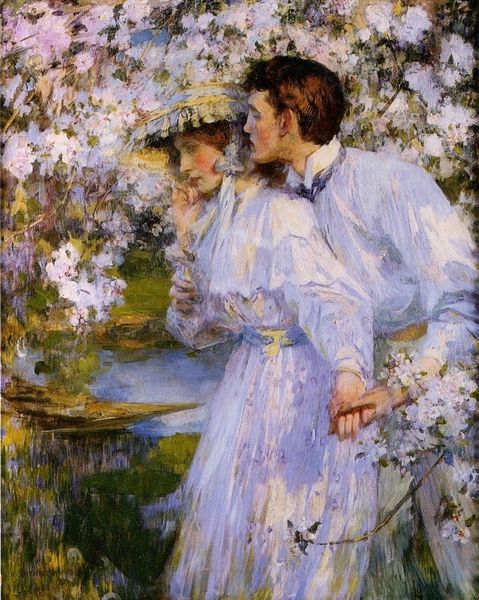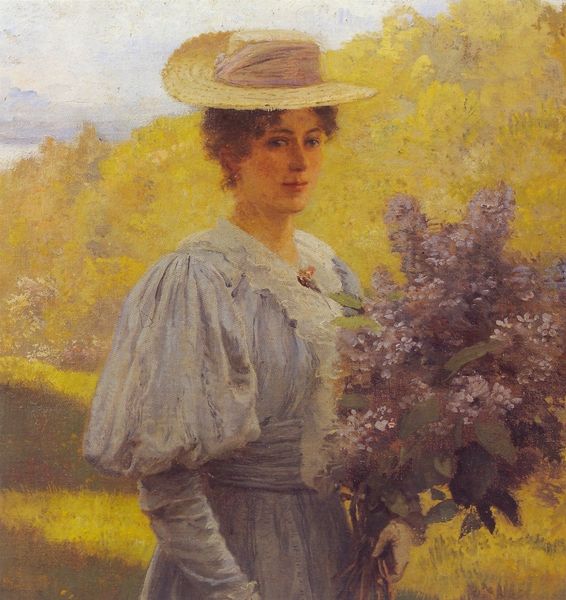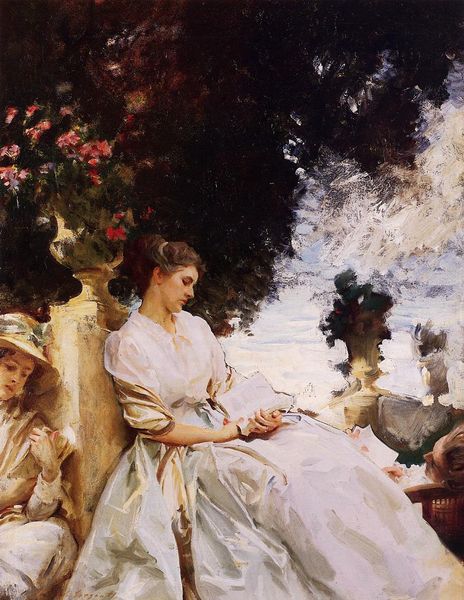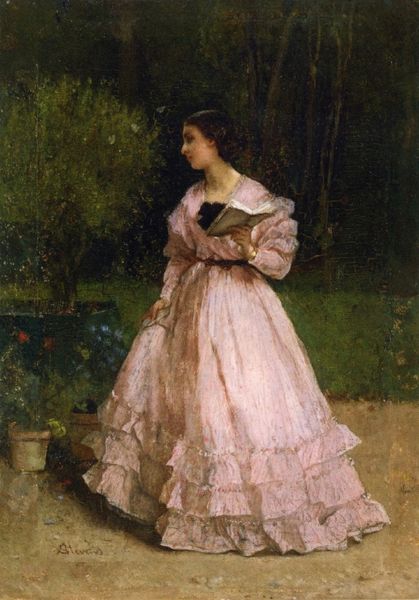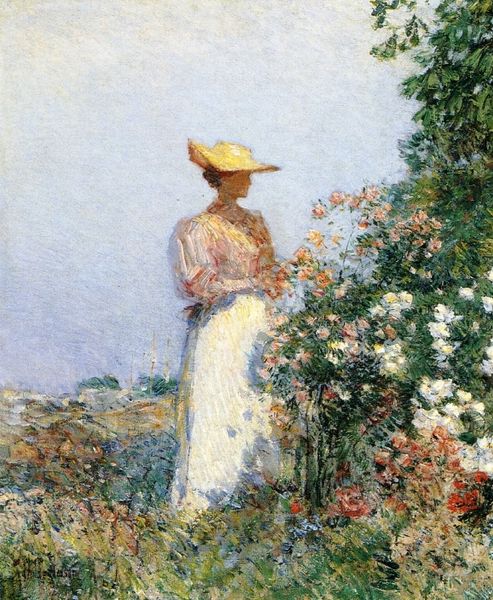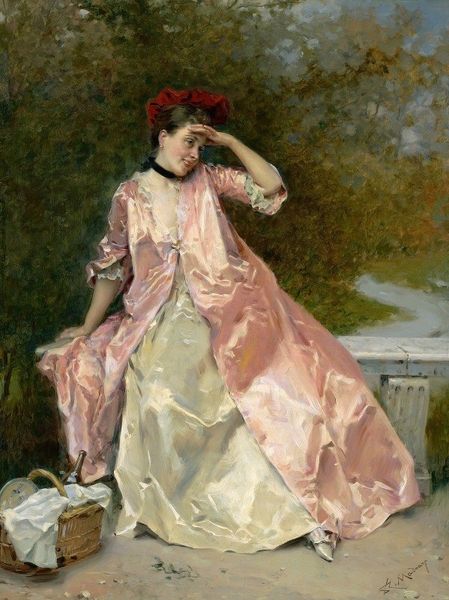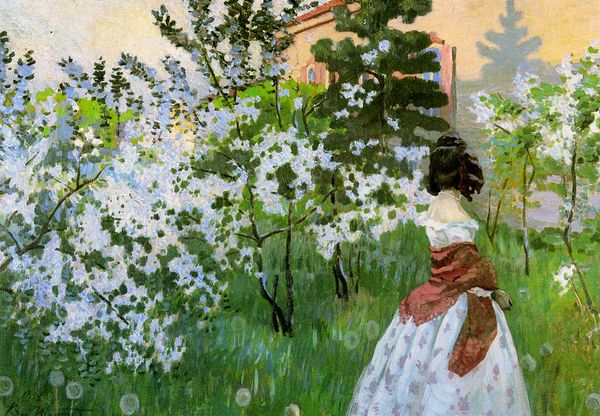
painting, plein-air, oil-paint
#
portrait
#
tree
#
garden
#
woman
#
painting
#
impressionism
#
plein-air
#
oil-paint
#
landscape
#
flower
#
figuration
#
oil painting
#
plant
Copyright: Public domain
Curator: Let's consider "In the Garden," an 1889 oil painting by Childe Hassam. It depicts a woman seated within a garden setting, seemingly lost in thought. What are your first impressions? Editor: It strikes me as incredibly serene. The woman, almost swallowed by the blossoms, seems at peace, although a quiet melancholy emanates from the scene. Curator: The Impressionist style really lends itself to that feeling. Hassam, like many of his contemporaries, explored themes of leisure and domesticity, painting women in both private and public spheres, but often within the constraints of the late 19th-century social roles. How does the imagery contribute to this sense? Editor: Flowers, particularly in Victorian art, had potent symbolic weight. Roses often signified love or beauty, and lilacs, such as those cascading above her, could symbolize first love or innocence. She's literally framed by these loaded symbols, which invites us to consider her inner world within these romantic paradigms. Her positioning on that ledge, at once grounded and yet set apart, adds to that contemplative feeling. It’s a visual marker, signifying a kind of transition, or being "on the precipice", both literally and figuratively, because it might as well be, at least figuratively, that a change will occur soon. Curator: Precisely. And that position allows for us to read her less as an individual and more as a signifier. Consider her white dress, which denotes purity, and yet, one wonders about the extent to which these symbols might serve to constrict or prescribe women's identities within the social codes of the time. Editor: Yes, her averted gaze invites our speculation, but it also withholds something. There’s an enigma there, isn’t it? It’s interesting how the soft, blurred lines almost mimic the ephemeral nature of memory or a daydream. Curator: Hassam, working en plein air, captured not just a scene, but an atmosphere, charged with the complexities of womanhood within that specific historical moment. He gives us this vision, but what did that mean for his portrayed subject? Editor: Perhaps it reveals how art often reflects and reinforces societal norms and expectations but also, quietly, the complex feelings which we may, today, want to investigate more closely. Curator: Absolutely, thinking about that moment through art opens a crucial dialogue. Editor: I agree; these symbols continue to speak volumes, revealing deeper truths about representation.
Comments
No comments
Be the first to comment and join the conversation on the ultimate creative platform.
